#link ecu
Explore tagged Tumblr posts
Text
Panic Grand Prix 2023 - The Best Corolla Event in the US?
I was supposed to have written this post about a week ago… but life happens… I won’t make this post too long (I lied) since I have to catch up with a bunch of video editing projects so bear with me on the lack of writing (I’m not even good at it lol). Panic Grand Prix 2023… What is the Panic Grand Prix?? The Panic Grand Prix is a customer appreciation event for Panic customers and friends with…
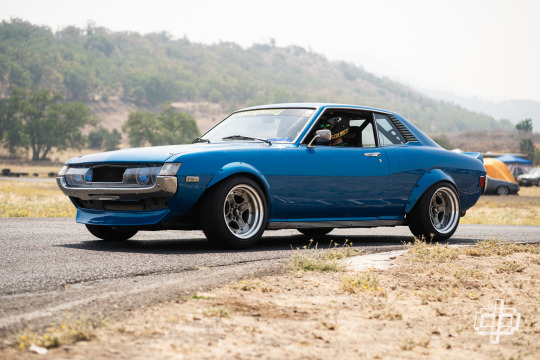
View On WordPress
#1uz#3sge beams#ae86#affinity circuit#beams ae86#corolla#corolla gts#corolla sr5#dtphan#hachiroku#ke70#link ecu#medford oregon#panic grand prix#panic made#panicwire#te72#toyota#toyota corolla
32 notes
·
View notes
Text
How Do F1 Cars Work?: Braking, Cooling, Sensors
I never know how to start these posts. Let's dive in.
Braking and Cooling
Brakes are an incredibly important part of any car, but most especially in F1. With the speed and power the cars have a sensitive, sturdy, and strong braking system must exist. In the case of modern cars, F1 uses an extremely efficient and durable carbon-carbon disc brake system. This allows the car to screech to a halt in a split-second, and allows drivers to use their speedy reaction times to the best of their ability. When the driver steps on the brake pedal, it compresses two master brake cylinders, one for the front wheels and one for the rear, which generate fluid pressure.
For the front tires, the fluid pressure is delivered directly to the front brake calipers (part that houses brake pads and pistons). Inside each caliper, six pistons clamp pads against the disc and it is this friction that slows the car down. For the rear tires it is a bit different.
At the rear, the car can brake by three separate sources: friction from the brakes, resistance from the spinning engine (engine braking) and electrical braking that results from harvesting energy from the MGU-K . Although the driver can adjust each of these on his steering wheel, when he presses the brake pedal, the three systems work together via the Brake By Wire (BBW) system.
When the driver presses the pedal, the fluid pressure generated in the rear braking circuit is picked up by an electronic pressure sensor. The signal from this sensor represents the overall rear braking demand from the driver and is passed to the Electronic Control Unit (ECU) where it is turned into a series of commands to brake the rear of the car. The ECU distributes its efforts to the three systems according to the the set up of the car and this is altered by the way that the driver has adjusted the switch settings on the steering wheel. This is what teams mean when they say changing the setting on the car.
Going hand-in-hand with braking, cooling is another important part of the car, especially for brakes. Basically, there is a series of systems that cools the power unit, brakes, and electronics. If the car overheats, it can lead to damage and lack of performance. There are a few ways to cool. Radiators cool the engine and hybrid system. Intercooler cools the air that the turbocharger compresses before it enters the engine. Brake cooling ducts bring air to the brakes in order to stop them from overheating.
2. Electronics and Sensors
So i'm sure many of you have looked at the steering wheel and been baffled that this thing that looks like a Nintendo Switch steers that car. The F1 steering wheel is incredibly complex and has a variety of buttons, screens, and knobs. For example, on the steering wheel is an area for strat settings, where their plans for all eventualities are mapped out. There is also a rotary knob for MGU-K settings, where drivers can switch around when faced with possible failures. The menu allows drivers control over every setting in the car. Beyond that there is the pit lane speed button, gear change buttons, race start button, energy recovery button, and brake balance knob, among others. It really tells you how much drivers do in a race beyond racing.

Other than the steering wheel, there is also the telemetry, over 300 sensors which gathers race data and sends it back to engineers on the pit wall. This way, engineers can either remotely alter settings and strat, or advise the driver on what to do. F1 uses a customized mesh wireless network system based on WiMax 802.16 at each racetrack. The sensors record data, which is then temporarily stored in the Electronic Control Unit (ECU), which controls functions like engine performance and power steering. That sensor data then travels wirelessly to a centralized location managed by F1. F1 then sends the data to the relevant team, of course very securely. Teams then use a system called Advanced Telemetry Linked Acquisition System (ATLAS) to view and analyze sensor data.
The final pretty important electronic devices on an F1 car is the many many cameras. The most recognizable camera is found in the "T" structure that sits atop of every F1 car. It gives viewers that top-down, forward facing view used often by broadcasters. this is also how viewers often distinguish between cars of the same team. One driver will have a yellow camera, the other has black. The two nose cameras provides a view of the front wing and low circuit. The 360 camera is on top of the chassis and provides a wide view of the race track, and everything else around the car. The driver facing camera is pointed directly at the driver and helps keep track of how they are doing, and in the event of the crash helps marshals and rescuers figure out the best way to help. The two rear cameras are settled on a rear facing structure, and allows the pit wall to see what is going on directly behind the driver and advise. Beyond these ones, drivers also have cameras inside their helmets, showing exactly what they see. Can't get away with much in an F1 car.
3. How They Work Together
So, we now know the basics of most parts of the car. But these parts all must work together before that car will go anywhere. How do they do it?
One of the more obvious relationships is between aerodynamics and power. The better the aerodynamics, the more usable the power is. They also work in tandem around different parts of the track. On corners the aerodynamics keep the car stable while the power peters off. On straights the power keeps the car boosted. Suspension and tires are also very connected. It is the suspension that keeps the tires on the ground. A good suspension will also mean that the tires are easier to manage, something any driver knows is highly important. Brakes and ERS are also connected because the brakes help recover ERS, pretty simply. Also the cooling system works with most of teh car, cooling engine, tires, and brakes. The biggest connection is probably between all the sensors on the car. They are connected to every single part, and even a small bit of damage can destroy them. The non-sensor components have to accommodate for the sensors and work perfectly with them in order for proper data to be sent back.
The ultimate goal of engineers is to create a car that works in harmony all together. The integration of the engine to the chassis is highly important. There have been cars that the parts were fantastic on their own, but the minute they were put together stopped working completely. Its why teams that produce their own engines have such a leg up over non-manufacturers. Its also why sometimes you will see a car that is running poorly until one small thing is changed, and then suddenly its brand new. Car harmony really is terribly important.
Alright, done! While I covered most of the important stuff, as always if there is any particular part of the car anyone wants me to dive deeper into, please let me know.
Cheers,
-B
32 notes
·
View notes
Text
Part 2: chatting with Yuji san, he said they had just returned from the Drift Tengoku 90's style Matsuri at Mobara Circuit. An event where all the cars had to be Old-school style and it sound amazing! Looking over his pink 180sx, I noticed a small Wakos oil sticking out the passenger fender. When I asked what it was, he said it was for the wastegate dump. With the cars' 90s look, I assumed it had a "boost up" or an older bottom/mid mount turbo. Instead, he had a top mount GT30 setup, making about 350hp if I remember correctly. His son's car also ran a GT30 with a Link ecu. His fuel setup was all SARD. Back in the day, all you would see was Rom tune, Power FC, or HKS F-Con. So it's cool to see some newer tech being used. With the small wheels, these cars must spin the tires like crazy, lol. The B-Wave cars were also joined by two X90 MarkII's from the Night Walkers. I will share those next.









53 notes
·
View notes
Text
JEFF THE KILLER REWRITE 2/4
Wow! You made it this far! You must really like staring at words!!
Incase you couldn’t tell, this isn’t the beginning. The first part is linked at the top of my page!
Maybe you should get another helping of popcorn, and clean the emo black eyeliner tears off of your face. Or get up and start your MCR vinyl back at the beginning because you continue to insist that sound technology hasn’t progressed past the year 1857.
Whats that? You want me to get out of your way with my intrusive paragraphs? Oh. I see how it is.
CONTINUE HERE ⬇️⬇️⬇️⬇️⬇️
The Face Off
The nightmare Jeff had on Monday night lingered with him through the next morning. He wasn’t the type to let something as silly as a dream frighten him, but this one had something strange to it. Something he couldn’t quite place. He knew it had something to do with the ringing, and that lingering feeling of bloodlust that had gone dormant inside of him once again. He knew it had something to do with the new, strange feeling that he was being watched everywhere that he went.
On Tuesday at school, he got shoulder checked by Randy in the hallway on the way to his 6th period class. Jeff didn’t let this get to him. Instead, he redirected the fury to his competitive spirit, knowing what was coming for Randy in his first practice on Friday. He spent so much time thinking about every trick, every shot, and every opportunity he would have to embarrass his new found enemy. To ruin him.
Jeff had also been keeping a close eye on Liu. He began to notice how he wouldn’t speak on the car rides home from school. How he would shut his bedroom door and not come out until it was time for dinner. It was unusual for him, even with his introverted personality. Jeff wasn’t surprised that his ignorant parents didn’t notice Liu’s strange behavior, but he was still angry nonetheless.
At last, the week ended, and Saturday came. Jeff had packed his belongings the previous night, and hung his practice uniform on his bedroom door. He watched Wisconsin beat Notre Dame while he did his math homework just to prepare himself mentally. He woke up extra early for the 8:30 practice just to be certain that everything was ready.
Jeff parked his car outside of the gym and locked it with a cheerful beep, before striding up to the door. It was freezing cold outside, with mounds of plowed snow scattered across the student parking lot. He showed up around 30 minutes early to have adequate time to stretch and meet the coaches. Jeff was grateful for the heaters over the doors when he walked inside, his entire body being hit with a wave of warm air. The warmth disappeared through the second pair of doors that opened into the rink.
Jeff walked alongside a faceoff spot and admired the condition that the rink was in. It was obvious that the school cared about athletics. When he came around the curve of the boards, he saw three men standing and chatting beside the bleachers. He recognized one of them as Mr. H. The men waved at him in unison, and Jeff waved back, picking up his walking pace to get to them quicker.
”Ah! You must be Jeffery!” One of the men greeted, his hand extended for a handshake, the other man and Mr. H following close behind him. The coach who led the group had white hair, and a white mustache. He looked to be in his mid 60s. His belly was round, and his face was red. He wore a red sweater with the school's hawk mascot over a black collared shirt. He also sported black dress pants with a shiny whistle around his neck. He was considerably shorter than Jeff.
“I am, but it’s just Jeff.” Jeff replied, firmly shaking the coach’s hand.
“I’m Coach Barkley, the head coach.” He chuckled, ignoring Jeff’s correction entirely. The man who looked like an assistant coach chuckled along with him. Jeff didn’t laugh. The only person who called him Jeffery was his father, and it always made him furious, “We’re so glad to have you here at ECU.” Jeff nodded, and politely extended his hand to the other coach,
“I’m Coach Carter. I coach JV, so you won’t be seeing me much.” Jeff gripped Coach Carter’s hand and gave it a firm shake. He had an anxious disposition about him that Jeff found a little creepy. He felt glad knowing he wouldn’t be spending much time with Coach Carter. As Jeff thought about this, Coach Barkley continued speaking,
“Considering this is your first day, we don’t expect you to join in the scrimmage if you don’t want to, but-“
”Scrimmage?” Jeff’s eyes lit up like a Christmas tree. He felt a smirk tug at the corners of his mouth. His timing was truly perfect.
”Um- Yes. We have scrimmages every Saturday.” The Coach seemed offended that Jeff had interrupted him.
”Oh, I’ll be in there.” Jeff nodded, knowing he wouldn’t miss this opportunity for the world.
“Told you he’s perfect.” Mr. H smiled, winking slightly at Jeff. Despite Mr. H’s compliment, Coach Barkley seemed only moderately pleased,
“Alright, considering that you play center, you might have some trouble with Randy. He’s very competitive, one of the best centers in the district.” Coach Barkley was cocky, but Jeff knew better,
‘How about the best in the state?’ Jeff thought, realizing that Coach Barkley was yet another obstacle that he would have to deal with.
“Jeff, why don’t you get your skates on, and meet some of the other players? Everyone else should already be in there.” Mr. H suggested, followed by passionate nodding from both of the coaches,
“Great idea, Mr. H. Jeffery, go ahead to the locker room.”
“It’s Jeff.” The teenager asserted coldly, narrowing his eyes at the head coach. He turned on his heel, and began to head towards the locker room. Once he was out of the adults’ lines of vision, Jeff shook his head and clutched his stick tighter. He used his free hand to open the door to the locker room.
Jeff felt 34 pairs of eyes fall directly on him, and heard all of the conversations die at once. His eyes landed on Randy elbowing Troy and Keith so that they could see what he saw. The room smelled like spray deodorant, and sweat. The atmosphere was so thick, you could cut it with a knife.
Jeff ignored them, and sat on an empty bench. He then unlaced his Converse and unzipped his bag to retrieve his practice uniform. He pulled his shirt off over his head, and tied his hair back into a low bun. Just as he was about to reach for his shoulder pads, one of the boys broke the silence,
“Are you the new kid?” Jeff turned to look up at him, noticing his striking green eyes. He nodded silently while adjusting his padding. Another kid with curly red hair asked,
“You’re from Milwaukee, right? Is it nice there?” Jeff chuckled at the underclassmen attempting to make conversation,
“Have you never been to Milwaukee?” The kid shook his head no, before Randy chimed in uninvited,
“Probably couldn’t afford it anyways.” A few of the other boys snickered at his cruelty. The freshman looked hurt at Randy’s words. Jeff stood up, and turned to face the tormentor. He had hit the peak of his rage, and began to spill his guts,
“What in the hell is your problem?” Jeff’s spat, his voice filled with venomous hatred, “Does bullying underclassmen get you off, or something?” The other boys in the locker room were shocked. They had never seen Randy get publicly stood up to before, and by the look on his face, Randy hadn’t either.
“What’d you just say? You wanna run that by me one more time, Jeffery?”
“What? Is Daddy’s job not getting enough playing time for you?” Jeff felt exhilarated as he watched his words seep into Randy’s skin.
”Why don't you pull up your pants and fight me? Or are you too pussy?” The tension between the two boys increased, rising over the boiling point,
Jeff silently shook his head, putting his blade guards on over his skates and slamming his locker behind him. He grabbed his stick and walked over to the door. Before he left, he turned to face his new team, “Don’t let this red-headed tool or his chicken-shit friends push you around.” He then turned all of his attention to Randy,
“If you have something to prove, let's see it in the barn.”
With that Jeff closed the door behind him, and walked back to the boards to begin stretching.
~~~~~~~~~~~~~~~~~~~~~
After a few laps around the rink to get warmed up, Coach Barkley blew his whistle, calling the team to the center ice. The team gathered around the coaches, clapping in unison. When he blew his whistle again, the clapping ceased. Yet another adjustment for Jeff to make.
“Today’s practice is for an hour. We’ll only play for two periods, because I have a doctor’s appointment. Halfway through, you all get a ten minute break to hydrate and huddle with your teams.” Coach Barkley instructed, “Our team captains today are Randy…and…Jeff.” The whole team looked at Jeff, who’s eyes were locked on Coach Barkley.
Jeff and Randy skated in front of the group of boys, and began to pick teams. Randy went first,
”Keith.” Keith, a left wing player, skated to Randy’s side. It was Jeff’s turn. He realized that he was picking completely in the dark. He also realized that it was probably part of Coach Barkley’s plan to help Randy’s team win, and elevate his status with Mr. H,
“You.” Jeff pointed at the red-headed kid whom Randy had taunted in the locker room. The kid looked surprised, and even pointed at himself to make sure that he had really been selected. Jeff nodded, and the red-headed underclassman skated over, a wide grin on his face. Jeff could tell that he wasn’t used to being picked first. Jeff noticed Coach Barkley snickering with his other coach behind his clipboard, and Randy whispering to Keith. Jeff turned to the red headed freshman,
“Don’t look at them. One of those two will absolutely be a teen father before they graduate.” Jeff joked, trying to ease the kid’s nerves, “What’s your name?”
”Adam.” He answered sheepishly. His shy demeanor and quiet voice reminded Jeff a lot of Liu,
”Are you a freshman?” Jeff questioned, trying to gauge how old he was,
“Yeah.” He responded, turning back to the crowd to see who else Jeff could pick, “Get that short kid with the black hair.” Adam whispered to Jeff. It was the kid with the bright green eyes from the locker room who had asked Jeff if he was new,
“Jeffery? It’s your turn.” Coach Carter stared at Jeff from across the ice.
“You.” Jeff pointed at the green-eyed kid, who zoomed over, and gave Jeff a gloved high five, “And it’s Jeff, please.” Jeff began to grow annoyed at his coaches ignoring his corrections,
”I’m Thomas, call me Tom.” He smiled, “You should get Brady. He’s the blond kid, he plays right wing. He’s really good.”
“I’ll take Brady.” Randy called.
“Damn.” Tom whispered, “Oh! Get Will, he’s the other tall one. He plays awesome defense.” Adam nodded in agreement,
”You.” Jeff pointed at Will, who skated over to Jeff’s side. He was stoic, and stood at around 6’1. He had dark skin, and a purple mouth guard.
Soon enough all of the players had been selected and sorted onto their teams. Jeff had taken the advice of his new teammates as his only guidance in choosing. He hadn’t a clue if they were correct or not. Coach Barkley gave the two teams 5 minutes to huddle up and strategize. The players gathered around Jeff, who began to speak.
“For my starters I need Tom, Will, Eli…” Jeff thought for a moment, “And Adam.” The team seemed shocked at Jeff’s decision, but fearing the wrath he had shown Randy in the locker room, they remained silent,
“Listen. I know I’m new. I know I don’t know any of you, and you don’t know me, and because of that I’m not gonna order you around or be an asshole. I’m not that guy. If some new guy had come to NMHS and started ordering people around like that, we’d probably be a little annoyed. I know that this probably isn’t ideal for you guys, and I’m sorry. But you have to understand. I want to win. I really hate losing. It’s just who I am. I’m done talking now, you guys tell me what I need to know.” After his short speech, Jeff began to listen to his teammates talk about what positions they felt comfortable in, their strengths, and their weaknesses so that he could form a game plan.
When Jeff heard Coach Barkley’s whistle, he knew it was game time. He skated to the center of the rink, and got into the ready position just as he had been taught. He bit his yellow mouthguard as Randy and his team got into position. Coach Carter waited for the okay from Coach Barkley to drop the puck. Once he gave Coach Carter a thumbs up, Jeff felt his heart rate accelerate.
When the puck dropped, the fight for the puck was fierce. The clacking of sticks against the ice and each other was the only sound that could be heard. It felt like an eternity before Randy’s team finally managed to get a hold of the puck. The left wing player darted down the ice towards Jeff’s team’s goal.
Jeff was not going to let Randy get away with this, and used his incredible skating skills to close the gap between him and the left wing player. He angled his body to get the puck back. He executed a perfect poke check, and stole the puck for himself.
He took off in the opposite direction with the puck in his possession, every calculated move he made showcasing his love of the game. He skated past defenders and found himself approaching the net. The only thing that stood between him and the goal was the goalie. Jeff took an inhale, and exhaled on a powerful wrist shot that went sailing past the goalie’s glove into the top left corner of the net.
Jeff held his stick above his head as he glided behind the goal. Within the first moments of the game, he had already scored. He noticed Coach Barkley glaring down at him, and whispering to Coach Carter. Jeff was beginning to realize how much Coach Barkley was there to protect Randy.
As Jeff skated back to the middle of the ice for the next face-off, he took note of Adam playing goalie. His freckled face almost matched his hair in redness from the cold.
When Jeff got into the ready position, he looked up at Randy with a sly smirk. Randy’s face contorted with hatred for Jeff. He was embarrassed that someone like him could just show up, and make him look like a fool. As the pair waited for Coach Carter to retrieve the puck, Randy made a jab at Jeff,
“Your stick handling is shit.” He hissed, putting his mouth guard back into his mouth. Jeff just kept his composure, and prepared for the face off. Coach Carter skated between them with the puck. With a high pitched whistle from Coach Barkley, the game proceeded,
As the game went on, Jeff continued to have luck. His only goal was to destroy and embarrass Randy by every means possible, but he remembered his mentor, Stanley’s, wise words,
”Play with your head, not your heart.”
His heart was pained a bit, knowing Stanley was all the way back in Milwaukee, and it would be months before he got to see him again. He felt gritted determination in his soul, wanting very much for his mentor to be proud of him.
After 12 more minutes of playing, Adam had successfully blocked one of Randy’s shots into the goal, causing Jeff and the team to cheer with much vigor. This infuriated both Coach Barkley, and Randy to their cores.
As for Jeff, he had stolen the puck countless times from their weak offense, gotten a sneaky assist, and scored another goal. Jeff was glad to see that his gameplay alone was throwing Randy off. After a great hip check to one of Randy’s teammates, Jeff successfully got a hold of the puck and zoomed down towards Randy’s goal against the boards. He zoomed around a defensive player, and was almost to the attacking zone.
Just as he was about to execute a pass to one of his teammates, he felt a force shove him from behind and down to the ice. Jeff’s gloved hands were the first to hit the ice, then the rest of his body. It was a nasty fall, but nothing new to Jeff. When he looked up he saw Randy skating past him with the puck. Jeff waited for the whistle to be blown so that Randy would be put in the penalty box, and the game could continue. The sound never came. Jeff stood up, and looked up to Coach Barkley. It seemed that he hadn’t even noticed Randy’s misconduct. Jeff gritted his teeth, and got back on defense. He would let actions speak louder than words, unlike Randy, who couldn’t seem to stop chirping the entire game.
Jeff zoomed back to the defending zone, his frigid eyes locking on Randy Hayden. He was going in for the kill. He executed a perfect, yet aggressive, shoulder-to-shoulder body check, and stole the puck for his team. No sooner than he had begun to return to the attacking zone, he heard the blow of the whistle. Jeff came to a halt, and whipped around to look at Coach Barkley. He looked at Jeff, his arm extended to the side horizontally.
“WHAT?” Jeff exclaimed, “That was legal!” He asked, his face burning with animosity at the injustice he was facing.
“You checked from behind, Jeffery.” Coach Carter explained with a monotone voice, “Head to the penalty box.” Jeff turned to face Coach Carter and defend himself,
“It-It was shoulder to shoulder! If it were from behind, how would I have taken the puck?!”
“Just go get in the box, we’re all waiting on you.” Randy had a sly smile. Jeff’s helmeted head slowly turned towards Randy. He felt a pain in the side of his head. The anger that he was feeling was changing into something new. That intoxicating haze of hatred and bloodlust had returned. Jeff felt sick with his fury, wanting so desperately to get even with this privileged prick in front of him. His body was shaking, his left eye and hand were twitching, and he had reached the precipice of his emotions. This display of blatant favoritism towards Randy sickened him. It wasn’t fair. Jeff’s adrenaline soared. He didn’t notice, but the ringing in his ears had returned.
Jeff removed one of the gloves from his hand and threw it down onto the ice, unable to contain his emotions any longer. He lunged at Randy, and delivered a forceful punch to his jaw. Randy wasn’t going to let Jeff take advantage of him so easily, however, and grabbed Jeff’s hand when he attempted to deliver a second punch. As Jeff tried to fight through Randy’s grasp on his wrist, Randy removed his gloves, initiating their fight. After a bit of struggling and pulling on each other’s jerseys, Randy got a pretty good hit on Jeff’s helmet cage, causing Jeff to be stunned for a moment. He fell hard onto the ice, but grabbed the front of Randy’s jersey so that he’d go down with him. He ripped Randy’s helmet off, and got a forceful right hook in on Randy’s ear.
The Coaches had let Randy and Jeff fight, thinking it was all a part of the game. But when the punches and shouting never ceased, they had to intervene.
Jeff finally got control over Randy, pinning his arms down to the ice with his padded knees. He threw his fist as hard as he could into Randy’s eye. Randy growled in pain, before hitting Jeff with an uppercut that had come out of nowhere. Jeff tried to fight through the pain, but it almost seemed impossible. He could feel warm red blood trickling down his face. He gritted his teeth and licked his lips. His tongue tasted metallic fire. The ringing in his ears that he had managed to ignore all of this time became too loud. It was the same as his dream, and the same as the day he had fought his Dad.
Jeff’s rage had changed once more. The bloodlust that he was feeling had been a primarily violence-based emotion. When he was wrestling Randy, he found that there was some sadistic, evil pleasure that came with it. Watching the blood seep from his nose. Watching his eyes water, and blacken from a bruise. Listening to Randy’s pained screams and growls as he struggled beneath him. He was completely at Jeff’s mercy, and he loved it. He relished in it. The control, the power. It was intoxicating.
Jeff was in the process of getting a hit in on Randy’s stomach, when without warning, his body tensed up. He couldn’t move his limbs, or his neck. His eyes darted around, trying to figure out what happened. Meanwhile, Randy was weakened from Jeff’s violent outburst. Every punch Jeff had expertly delivered was excruciating, and blood flowed from Randy’s nose, mouth, and bruises were beginning to form on his face.
Jeff was pulled off of Randy by Mr. H, and shoved to the ice away from him. Coach Barkley’s and Mr. H hovered over Jeff’s tense, trying to understand what was happening.
“BOYS! WHAT THE HELL IS GOING ON??” Coach Barkley demanded, his eyes moving back and forth between Randy and Jeff. He was interrupted by Jeff’s screeching in pain from the sudden tension in his muscles. This is when the spasms set in. Jeff’s body went completely limp for a short moment, before beginning to convulse and twitch sporadically. His eyes were wide open, almost like they were going to pop out of his head. Foamed spit emerged from the corners of his mouth, sliding down his cheeks and around his ears. The entire team were still in shock, including Troy, Keith, and Randy.
“Oh my Gosh! Call an ambulance! He’s having a seizure!” Mr. H exclaimed as Coach Carter got down to Jeff’s level to make sure he didn’t injure himself.
The worst part about his seizure was that the entire time it was happening, Jeff was conscious and aware. There wasn’t an inch in his body that wasn’t in horrible pain. The only one of his senses that didn’t work was his hearing. Everything around him was chaotic, but silent. His vision was blurry from tears that began to roll down his cheeks. As Jeff started to lose his consciousness, he felt relief wash over him as the pain finally began to fade. The last things he saw were his Coaches on the phone with 911, and the tall, faceless figure in a suit that stood behind the boards and watched him suffer.
The Mentor
It had been a long couple of days for Jeff. He had suffered a grand mal seizure while he was fighting with Randy. The hospital he was taken to had run every test, every exam, and every scan on the boy. Each one came back normal. Jeff was completely healthy. Seizures could happen at random and to anybody, but Jeff’s wasn’t typical. His seizure had lasted for far too long and was far too severe to be ordinary. Still, there was nothing that the staff could do, so they moved on.
When Jeff finally woke up, it had been a day and a half since his seizure had occurred. He first heard the buzzing of fluorescent lights over his head, and the steady beeping of a heart monitor. He could smell disinfectant within the air, giving the hospital a sterile scent. His body was covered by a thin, coarse blanket that hardly qualified as bedding. His feet were wrapped in socks, and his body in a green hospital gown. He had an IV in his arm, pumping fluids throughout his body. His eyes fluttered open, and a hazy voice called out to him,
”Jeff? Are you awake?” When he had finally shaken off the cobwebs of his unconscious state, he could see who had just spoken to him.
“Stanley?” Jeff breathed, raising his head barely above the pillow and rubbing his eyes with his free arm.
“Jeff! Oh, thank goodness you're awake! I need to call your brother and let him know you’re okay!” Jeff only registered half of what Stanley said. He laid back down, and watched as the suspended ceiling above him moved like a wave. All of the sudden, a nurse appeared above him and began to gently touch his arm. She too was speaking, but Jeff couldn’t understand. Everything sounded muffled. Everything looked muffled. This was until Jeff heard one word. Well, one name.
”So…Something apparently happened with some kid named…oh, what was it?” Stanley pondered, scratching the white stubble on his aged chin, “Ronald…Oh! It was Randy!” Jeff snapped, and sat up immediately. Both the nurse, and Stanley were surprised at this. The heart rate monitor next to Jeff’s bed began to quicken in pace. He was now fully awake and aware of his surroundings. Jeff’s crystal eyes were wide, and sick. They were not the eyes of a sane man.
“Woah! Lay back down, son. You’re gonna hurt yourself!” The nurse gently pushed Jeff’s chest, attempting to get him to lie back down. For a moment, Jeff didn’t budge. Stanley, in his wiseness, noticed Jeff’s right eye twitching slightly. He stood up, his left hand clutching his cane,
“Jeff, it’s okay. You’re okay. Lay back down so the doctor can check on you. You’re alright, I promise.” He hobbled over to Jeff, rested his hand on Jeff’s shoulder, and guided him back down into a lying position. The heart monitor’s beeps began to slow at Stanely’s touch.
“Sorry…” Jeff mumbled, stretching his arms out, “What happened?”
“You’re alright, don’t apologize. You had a seizure.” The polite nurse explained, “You’re a really tough kid Jeffery. We’re gonna run some tests later to see if we can find a cause. Can you take a deep breath in for me?”
“Please, call him Jeff.” Stanley smiled, and nodded at the nurse.
“Oh! I’m sorry, Jeff.” The nurse looked down at her patient, knowing he was too disoriented off of the painkillers he was prescribed to understand what was happening. Jeff complied with her instructions, and the nurse listened to his lungs.
She ran a few more short tests while Stanley had stepped out of the room to make a phone call to Liu, and Jeff’s parents. When the nurse left, she invited Stanley back to the room, who shut the door behind him after wishing her well.
Stanley Waterbury was an older man, in his late sixties. His dark, weathered skin showed the weight of the long years he had lived. He had dark eyes like pools of ink that looked especially beautiful when the sunlight hit them just right. His halo of short silver hair matched his beard, which was trimmed neatly. His glasses sat perched on his nose, right above his contagious, knowing smile. His hands were calloused, proof of his life of hard work.
He walked with a cane, as he suffered an ACL injury during his legendary hockey career that had put him out of the sport for good. Stanley had dedicated his life to hockey, and didn’t let this injury stop him from coaching the sport he loved so much.
Stanley sat on the rolling stool that the nurse had just been sitting on beside Jeff’s bed. He gave Jeff a one-sided hug as Jeff was too weak to move. He pushed Jeff’s bangs out of his face and tucked them behind his ear. Jeff looked up at him weakly,
“What hospital is this? Did you drive all the way from Milwaukee?” Jeff wondered, his voice quiet.
“You’re about an hour away from Elmerville, and an hour away from Milwaukee.” Stanley explained, “I came as soon as I heard. I’m sorry that this is happening to you, son.”
“I’m fine. It’s nothing.” Jeff tried to sit up in his bed, but realized that he couldn’t.
“Quit moving around, boy. You need to rest.” Stanley rested his hand on Jeff’s shoulder, and looked into his eyes with a pity filled expression. Jeff sighed, and closed his eyes.
“Where’s mom and dad?” He asked, already knowing the answer to his question. He stared up at the ceiling above him with tired eyes. Stanley hesitated, knowing it wasn’t his place to speak illy of Jeff’s parents,
”They…uh…couldn’t make it.” He answered, “Your father had work and your stepmother…” He trailed off, knowing he couldn’t properly excuse their absence. Jeff’s eyes burned, and tears formed in the inner corners.
”Couldn’t? Or wouldn't?” Jeff muttered, a tear rolling down his pale cheek. Stanley didn’t say anything, because his heart of hearts burned with the same animosity as Jeff’s. Stanley had known Jeff since he was in elementary school, and seeing him like this broke his heart. Jeff was like a son to him, and his wife.
“I’m so sorry. Liu is with Margret. They’re on the way, and should be here in an hour or so. I’m not sure how bad the traffic is heading this way.”
“When did you get here?” Jeff asked, turning his head back to Stanley, who wiped the tear off of Jeff’s cheek.
”Late last night. I got the call from the school because I’m on your emergency contact list. I came as soon as I heard.”
“You didn’t have to do that.” Jeff had a look of genuine concern on his face.
”It’s alright. Someone had to come and check on you, and fill out all that damned paperwork.” This comment was a slight jab at Jeff’s parents, as Stanley would never say that he didn’t like them out loud, “Do you want to talk about what happened?” He asked, the fluorescent light reflecting off of his gold wedding band. Jeff paused for a moment, gathering his thoughts. He had a lot to say, but he wasn’t quite sure if he could,
“I…I’ve just been so angry.” Jeff chuckled limply to himself, “That’s not new, though.”
”I was gonna say.” Stanley gently pinched Jeff’s cheek. The teen sighed, preparing to speak his mind.
”Ever since we moved to Elmerville, I’ve been…angry. But, not regular-angry. I’ve been angry all the time. I haven’t had a moment of peace since I unpacked my stuff and moved in. I keep getting these…weird thoughts, and this ringing in my ear out of nowhere. I-I feel like I’m being watched all the time…” Jeff explained erratically, scratching around the IV in his arm,
“Moving can be tough.” Stanley changed the subject to try to improve Jeff’s move, ”Change is hard. I know how much you loved Milwaukee, and how much you wanted to stay. Your team misses you a lot, and when I go see them at the barn, they always ask how you’re doing. Have you been keeping up with them? That might help you feel better.”
”I chat with them every now and then. If I talk to them for too long, I just start to get sad.” Jeff sighed, yawning quietly.
“I see. And what about this fight you had?” Stanley’s demeanor changed to one of a frustrated parent,
”Yes. I’m sorry. I broke my promise.” Jeff mumbled, remembering the guarantee he had given to Stanley before he left, swearing to stay out of trouble.
“What fights have you been in? How many have you been in?” Stanley raised an eyebrow, his hands wrapping around his wooden cane. Stanley was the only person Jeff would be totally honest about this with, because he knew deep down that Stanley was there to help him. He would never judge Jeff, and often gave him great advice.
“My first fight was with my dad. I got physical, I guess, but it just happened so fast. He makes me so angry, Stanley, you know how it is.” Jeff vented.
“I do, son. I do.” Stanley shook his head, and muttered quietly about Jeff’s parents to himself. He then sighed, and continued “And the others? Who is this Randy kid?” Jeff felt his heart rate increase at the mention of his enemy’s name. The heart rate monitor mirrored Jeff’s anger, putting it on display. With this, Jeff’s demeanor changed. His regular, conversational self was replaced with something else. He sat up slowly, and the beeping began to accelerate once more, almost like an omen,
“He’s the athletic director’s son.” Jeff explained, “I actually liked Mr. H, even after his pathetic son and his friends had tried to intimidate me after school one day. The first time we fought was in that classroom. He-he was going to fight me, Stanley, I could just- I could…tell. Luckily, his Dad strolled in and broke it up. But at practice, things got…rough. He checked me from behind, and they-they didn’t call it. I was pissed, but I got back up and kept playing. After that, I shoulder checked him, and-and it was COMPLETELY LEGAL. But-but they called it! They called it Stanley! I was just so…mad. I just wanted to take my stick, break it in half, and gut him like a fish!!” Stanley’s eyes widened, concern washing over his face. Jeff had always been a fighter, but nothing like this. He decided to blame it on the painkillers, but his gut remained skeptical. There was something deeper going on here,
“And…that's when you had your seizure?”
“Yeah…But that wasn’t…Look, I saw this- this thing, Okay? It had- it was tall. Really tall. Like, a street lamp. It wears a suit, a-and it has no face. Its face is- it's gone. It’s got long arms, and it was watching me die. I was laying on the ice, having my seizure, and it was watching me die- he’s been following me. I’ve seen him before. He won’t stop following me, and-and watching me.” Jeff had a small fit of giggling before continuing to ramble about what he had seen. Alarms were going off in Stanley’s mind, especially when he noticed the deranged look in the young man’s eyes.
“Jeff, are you alright?” Stanley asked as Jeff continued to ramble incoherently without ceasing. As he asked this, a few doctors walked into the room. Jeff stopped talking when he saw the group of doctors that had made their way into the room, and instead looked down at his folding arms.
“Good afternoon, Jeffery.”
“It’s Jeff, please.” Stanley’s face was contorted with confusion as he corrected the doctors.
“Jeff, my apologies.” The doctor smiled down at Jeff, “I’m doctor Saia, and we’re here to run a couple tests on you.”
While the doctors were talking to Jeff, Stanley pulled one of the doctors aside to speak privately.
“Is there something I can help you with, Mr…”
“Waterbury. I’m Mr. Waterbury but you can call me Stanley.” He shook hands with the doctor, “Look, I think there’s something wrong with that boy…you know…in the head. I’ve known him since he was a very young man, and he’s never acted like that before. Could it have something to do with the medicine that he’s taking?”
“I see. Can you describe his behavior for me, Stanley?” The doctor asked with a click of his pen, taking a pad and paper out of his coat pocket.
“He was talking- no, rambling on and on. He’s not a quiet boy, but he’s always liked to keep how he’s feeling to himself. He got into a fight, as you know, and every time I say the name of the boy he got into a fight with, the beeping heart thing beside his bed goes bonkers!”
”I heard about the heart rate part from one of my coworkers.” The doctor added, scribbling notes down on his paper.
“That’s not all. He started talking about some…monster that he saw before he passed out at the rink. His eyes were wide, and crazy. He just…doesn’t seem okay.”
”A…monster?” The doctor seemed puzzled.
”Yes! He said it was tall, and had long arms, and a suit…or something like that. He’s really not one to believe in ghost stories. I guess it could have been the seizure, but I just don’t know, doctor…”
”He stopped taking painkillers for the muscle cramps around 10 hours ago, but I supposed there could be some lasting effects. They wouldn’t cause something as severe as what you explained, that is of course, if everything you told me was true.” The doctor thought out loud, “How about I give one of my colleagues at Lakewood State Hospital a call?”
“Lakewood?” Stanley asked with an anxiety riddled tone, “You think he’s crazy?”
“No sir, I don’t. I know a very skilled, and professional psychiatrist that deals with patients, like Jeff, who have endured challenging, or traumatic experiences. He can access Jeff’s mental health, and check on how he’s doing. I was actually going to suggest that anyways, considering what Mr. Hayden from ECU told us about Jeff’s recent history.” Stanley nodded solemnly, and a silence fell between the two.
”Oh, speaking of Mr. H,” Stanley sighed, “I need to tell him about his hockey team. That poor boy is gonna be heartbroken.”
“I would suggest waiting until. He isn’t in a good headspace to receive such bad news.” The doctor suggested, scribbling down a number on a piece of paper and handing it to Stanley, “This is my colleague, Dr. Harrington. Give him a call. He would be happy to book an appointment for Jeff.” Stanley ran his hand across the back of his head, his silver stubble scraping against his calloused palm.
”Alright. Thank you, doctor.”
“Anytime. If you have any more questions or concerns, please don’t hesitate to ask.” With this, Stanley and the doctor came back into the hospital room where Jeff was lying down and answering the doctors’ questions.
Stanley didn’t know if it was because of Jeff’s behavior, his story, or the insane look in his eyes, but he had a bad feeling. He was worried about Jeff, and wondered what was yet to come.
~~~~~~~~~~~~~~~~~~~~~
For the next 3 days, Jeff rotted in the hospital bed, and was asked the same redundant questions every day. They checked for tumors all throughout his body, they checked his family history, they ran ECGs, blood tests, toxicology screenings, and they drug tested him. Nothing. Not a single abnormality. Jeff was a completely normal boy. Once the doctors couldn’t find the answers they were looking for, Jeff was given various medications and told to drink lots of water. He was then discharged and sent back home.
The car ride home was painfully silent with apprehension. Jeff’s stepmother and father didn’t speak a word to him. They were obviously upset, but Jeff couldn’t understand why. Their son had been in the hospital for three days, and they didn’t even bother to call, let alone visit him. When they came to pick him up, they didn’t give him so much as a hug. Jeff wore a gray crew neck and scrub pants provided by the hospital, because his parents didn’t bother to bring him a change of clothes. The silence hung over the car like a dark rain cloud, until Jeff’s father broke it.
“This new town was supposed to be a fresh start for our family, and you and your brother have done nothing, but make it more painful.” His father snapped through gritted teeth. Then, his stepmother chimed in,
“You know, I wanted to make friends with some of the other families in our neighborhood, but we won’t be able to do that anymore, will we?” Jeff was floored by both of their statements, but he wasn’t surprised. If it wasn’t obvious that all his parents cared about were their images, it was now. But still, Jeff remained silent. He wanted to speak. He wanted to tell his parents everything that he felt about them, but he did. Some unseen force beckoned him to see what else they would share if he just stayed quiet,
“The medication was weird enough, but a shrink? I was backed into a corner to make an appointment with that Dr. Harrington by Stanley, and your doctors. Did you know that, Jeffery? You think I wanted to do that? What do you think everyone else in our neighborhood thinks about that, huh? That there’s a psychopath in town?” Jeff stayed silent, his rage very present, but quiet. It almost felt like his body was on autopilot, and he was watching everything he did, but not responding to it by his own volition. He was in the passenger's seat of his own body.
“Suspended from school your first week in. Ridiculous. Absolutely Ridiculous.” His stepmother shook her head in disappointment. This was news to Jeff. He sat up a bit, and looked at his father through the rear view mirror.
“Suspended?” He asked weakly.
“Ha! I wondered where you were! Yes, Jeffery. Suspended. No more school for two weeks.”
”Why?” Jeff questioned, as his stepmother sighed and shook her head more,
“You don’t remember assaulting Randy, Jeff? How you beat that boy nearly to death? Does that ring a bell? Mr. H’s job is on the line now because of that. Because of you, Jeff.”
“I assaulted him, huh?” Jeff thought, hugging his chest.
“Well, I suppose one good thing came from this. You got kicked from that stupid hockey team. Now you actually can do something productive with your free time.” Jeff’s world stopped entirely. He couldn’t believe what he was hearing. He shot up, his face contorted with vexation.
“WHAT?!” He demanded, his father chuckling and sighing out,
”Oh yeah. They don’t believe that you’re stable enough…you know…in the head.” His father gripped the steering wheel at 10 and 2, “Quite frankly, we agree.” He added. Jeff felt his soul shatter. The thing he loved, his passion, his escape, had been ripped from his hands just like that. It dawned on him that he now had no school, no friends, and no hockey.
“I think it’s time you let go of your silly dreams, Jeff.” His stepmother admitted, turning to face her son. That haze was back. That sick, twisted anger. That hatred and unadulterated rage, pure and sickening, “Your father and I think it would be best if…you shadowed at the firm.” Jeff’s jaw dropped. There was no way his parents were serious.
“Y-you’re joking, right?” Jeff begged, his father scoffing,
“Jeff, you know damn well that playing in the NHL isn’t a real job. Hockey is barely a real sport, its-its just a game. You should come with me to work, and try something new, son.” Jeff was at a loss for words. He felt hot tears welling up in his eyes. He aggressively wiped them away, as he would rather die before he gave his parents the satisfaction of seeing him cry.
“I…I can’t-“
”No. No Jeff. I’m sick of all of the damn games that we’ve been playing for the past 17 years. It’s time you get your head out of the clouds, and get a grip. It’s time that we become a real family. Whether you like it, or not, things are gonna change around here.” Jeff leaned back in the car seat, and felt defeated. Everything that he had worked for, sweat for, cried for, literally bled for. He was watching it all go down the drain.
He turned his body towards the car window to watch the treeline pass behind them. His father continued to ramble on about being a lawyer. Jeff wasn’t listening. He didn’t have the energy to fight. He fell into bitter silence for the rest of the car ride.
You’re still here? WHAT??? Thank you!! You’re halfway there!
#jeff the killer#creepypasta#creepypasta fandom#jeff the killer rewrite#jeff woods#jeff the killer creepypasta#liu creepypasta#liu woods#homicidal liu#creepypasta headcanon#creepy pasta#creepypasta rewrite#creepypasta jtk#jeffery tigran woods#jeffery woods#jane the killer#horror writing
16 notes
·
View notes
Text
Link to digital version of the ECU art show!!
Art show
24 notes
·
View notes
Text


The ECU is basically the big bad government in my original story MARKED linked in bio
Copyright © 2025
All rights reserved.
No part of this publication may be reproduced, distributed, or transmitted in any form or by any means, including photocopying, recording, or other electronic or mechanical methods, without the prior written permission of the author, except in the case of brief quotations embodied in critical reviews and certain other noncommercial uses permitted by copyright law.
This is a work of fiction. Names, characters, places, and incidents are either products of the author's imagination or used fictitiously. Any resemblance to actual persons, living or dead, or actual events is purely coincidental.
#anime and manga#animation#digital art#fanart#orginal art#original art#artwork#art#digital illustration#digital drawing#digital aritst#original post#original character#original story#wattpad
2 notes
·
View notes
Note
Okay okay back with more Bandit questions and observations now!!! Hi!!! First off, what's the model of his gun? Literally just curious, really doesn't mean anything unless I feel like drawing it lmao. Secondly, what's his thoughts on the people in power/the guardians + the queen (I'm lumping the Judge into the guardians)? You said he won't work when he can survive well on his own, but does his dislike stretch out to even wishing harm on the guardians? Actually, does he know if a guardian dies, their Zone dies, too? How knowledgeable is he on the world of OFF's lore and how it functions?? Thirdly, does he have any friends I should know about? You drew him interacting with Project Goldfinch/Just Finch to break up the text in my first ask, what's their relationship? Does Bandit scam him to hell and back, or do they just casually chat every now and then? Fourthly, I VERY BRIEFLY checked out Ask Bandit and here are some observations I made: Uno, how come you ship him with Red from Animal Crossing? Is it cuz they both steal and resell?? If so, that's hilarious and I love your sense of humor. Dos, when drawing him with Elsen 7 I did not know Bandit currently resides in Zone Three, because 7 lives in Zone One. This whole time I was under the impression he travels through Zones for some reason lol? I guess that's my curse of having a handful of ECU Elsen that do that themselves lmao. Last but not least, not something Ask Bandit related, just generally speaking, would you like to see any future doodles I make of Bandit, whether he's interacting with my own OCs or otherwise? If not, I totally get it lol. Sorry if this is too many questions btw!! You're free to infiltrate my inbox with silly questions too if you want, just to make it more fair. Thank you! :]
Apologies in advance, I didn't make any new Bandit art for this post so I'm just linking something I drew in April that I don't think I shared to tumblr XD Answer time!
I modeled Bandit's gun after a Glock?? Kinda?? I didn't really reference a specific model, more like loosely inspired. I probably should create a prop-reference for it, but I haven't yet.
Bandit's dislike for authority does not stretch to wanting to take out the guardians. It would be counter-intuitive to his role as a merchant to kill off his customers by killing off the guardians. Bandit cares too much about profit, and although the guardians are annoying, without them he wouldn't have profit.
Bandit is fully aware on how the world of OFF works, it's inner workings, and other meta things.
Bandit will say anyone is his friend, even if they clearly hate him. Louis would be the only one that would truly think of Bandit as a friend (except maybe my elsen-sona, but they're a mary-sue type oc and should probably not be counted if we're talking in-universe/story lol)
As Finch is the protagonist in my game concept, Bandit will be the merchant selling them items. Finch is distrusting of Bandit, but sees him as a necessity in their mission. I do have an idea where Bandit does steal something from Finch to propel the plot, but who knows if that'll stay in the final lol
Bandit x Redd is a joke ship created by @brandy-elsen (tagging the account it was posted on and not your current account because I do not wanna waste a tag on this I am sorry Brandy AHHSGFG). All the credits to her for the comedic genius. I think you guessed right as to why that ship exists tho. I just drew it for that post because it met the "two pieces of fanart" criteria I set.
Bandit travels the zones, your initial assumption was right. He is only in Zone 3 on the askbandit blog because of the story being told on there. He's gotta refill his stock of sugar manually since sugar happens to be one of the things he cannot magically pull from his pack.
I would love to see future doodles you make of Bandit! I like collecting all the fanart I get and posting it (with credits/links) to his gallery on toyhouse.
I'm terrible with asking questions, but I'll keep your offer in mind if I have any in the future! :D
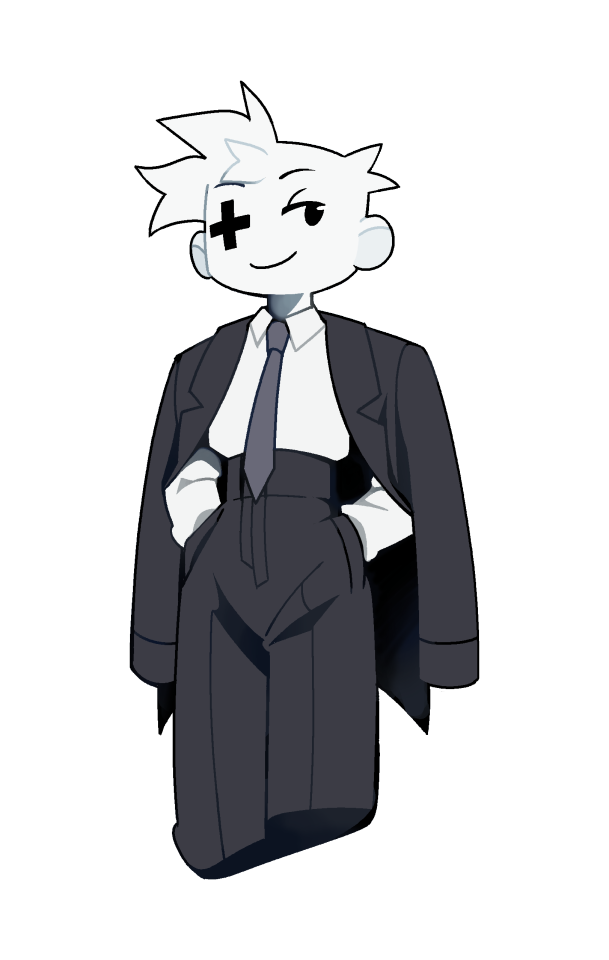
a dapper Bandit in a suit
#bandit (elsen)#bandit elsen#bandit#finch#finch (PGF)#finch (elsen)#Project GoldFinch#PGF Dev#oc#original art#original character#louis (elsen)#fan oc#off fan oc#elsen oc#elsen (off)#elsen off
8 notes
·
View notes
Text
youtube
The Volvo 850 was launched in 1992 as a front-wheel-drive family car with a transversely mounted 2.0 to 2.5-liter inline-five engine. It featured a sophisticated multi-link rear suspension and a focus on safety and comfort. But beneath its practical image, the 850 had solid engineering — enough for Volvo to take it racing.
In 1994, Volvo entered the British Touring Car Championship with the 850 Estate — the first time a wagon had competed at this level. Developed in collaboration with Tom Walkinshaw Racing, or TWR, the BTCC-spec 850 was fully race-prepped.
It ran a naturally aspirated 2.0-liter inline-five engine producing around 280 horsepower at over 8,000 RPM, mated to a six-speed sequential gearbox. It featured front-wheel drive, a limited-slip differential, race-tuned suspension, and AP Racing brakes. The body was stripped and reinforced, weighing in at roughly 975 kilograms.
Aerodynamically, the estate shape wasn’t ideal. Its tall rear created more drag compared to the sedan. But the longer roofline added stability, and the car’s unique profile helped grab media attention.
The car was driven by Rickard Rydell, a Swedish touring car specialist, and Jan Lammers, a former Formula 1 and endurance driver. Despite its unconventional form, the 850 Estate showed competitive pace.
While it didn’t win races, it scored consistent mid-field results — including a best finish of fifth place at Snetterton. It laid the groundwork for future success. In 1995, Volvo switched to the 850 saloon, retaining the same mechanical setup but with better aerodynamics. That year, Rydell won two races and finished third overall in the championship standings.
The estate only ran for one season, but it left a lasting impression.
Volvo 850 Estate BTCC 1994 Technical Specifications
General Model Volvo 850 Estate Year 1994 Series British Touring Car Championship BTCC Team Volvo TWR Tom Walkinshaw Racing Drivers Rickard Rydell Jan Lammers
Engine Type Volvo B5204T based inline 5 Displacement 2 0 liters 1984 cc Configuration Naturally aspirated 5 cylinders Power Output Approximately 280 hp at 8500 rpm Torque Estimated 245 Nm Valvetrain DOHC 20 valves Engine Management Racing spec ECU developed by TWR
Transmission Type Xtrac 6 speed sequential gearbox Drivetrain Front wheel drive Differential Limited slip differential
Chassis and Body Chassis Modified production unibody Body Style 5 door estate station wagon Construction Seam welded reinforced for racing Weight Approx 975 kg per BTCC regulations Roll Cage FIA spec full roll cage Aerodynamics Front splitter minimal rear wing estate roofline provided natural rear stability
Suspension Front MacPherson struts with coil springs and adjustable dampers Rear Delta link rear axle with coil springs and adjustable dampers Setup Fully adjustable racing suspension
Brakes Front AP Racing ventilated discs with 4 piston calipers Rear AP Racing solid discs Brake Bias Adjustable
Wheels and Tires Wheels 18 inch center lock alloy race wheels Tires Dunlop racing slicks BTCC control tire
Interior and Safety Interior Stripped with single racing seat Harness Racing harness Fire System Onboard fire suppression system Dash Digital dash and data acquisition system
Performance Estimates Zero to sixty mph Around 4 point 5 seconds Top Speed Approximately 150 mph depending on gearing and track
Notable Results 1994 Best Finish 5th place at Snetterton Overall Points Consistent mid field performance Public Impact High media attention due to unconventional estate body style.
2 notes
·
View notes
Text
Signs Your Engine Oil Pressure Transmitter Needs Replacement
n Engine Oil Pressure Transmitter is a crucial component in ensuring the smooth operation of your vehicle’s engine. It monitors the oil pressure and sends this information to the car's electronic control unit (ECU), allowing you to stay informed about the engine's health. One popular model, the 64279-004-1, is known for its reliability, but even the best parts can wear out over time. Here are some key signs that your engine oil pressure transmitter needs replacement.
1. Fluctuating Oil Pressure Gauge Readings
If you notice that your oil pressure gauge is providing erratic readings, it could be a sign that your Engine Oil Pressure Transmitter is failing. The gauge might swing wildly from high to low pressure without any apparent reason, indicating that the transmitter is sending inconsistent signals to the ECU.
2. Oil Pressure Warning Light
The oil pressure warning light on your dashboard is designed to alert you when there’s a problem with your engine’s oil pressure. If this light comes on frequently or stays illuminated, it’s a strong indication that your 64279-004-1 Engine Oil Pressure Transmitter might be malfunctioning. Ignoring this warning can lead to serious engine damage.
3. Unusual Engine Noises
A failing Engine Oil Pressure Transmitter can lead to incorrect oil pressure readings, which in turn can cause inadequate lubrication of engine components. This may result in unusual noises such as knocking, ticking, or tapping from the engine. If you hear such sounds, it’s advisable to check your oil pressure transmitter.
4. Engine Performance Issues
When the Engine Oil Pressure Transmitter isn’t working correctly, it can affect the overall performance of your engine. You might experience reduced power, poor acceleration, or even stalling. These performance issues are often linked to incorrect oil pressure readings, leading to improper engine lubrication and increased friction.
5. Oil Leaks
Sometimes, physical damage to the Engine Oil Pressure Transmitter can cause oil leaks. If you notice oil puddles under your vehicle or see oil seeping from around the transmitter, it’s a clear sign that it needs to be replaced. Oil leaks can lead to low oil levels and inadequate lubrication, posing a significant risk to your engine.
6. Fault Codes
Modern vehicles equipped with onboard diagnostics (OBD) can detect issues with components like the 64279-004-1 Engine Oil Pressure Transmitter. If your vehicle’s OBD system registers fault codes related to oil pressure, it’s essential to have the transmitter inspected and potentially replaced. These codes can be read using an OBD scanner, helping you pinpoint the issue quickly.
Conclusion
Maintaining proper oil pressure is vital for the longevity and performance of your engine. The Engine Oil Pressure Transmitter plays a critical role in monitoring and regulating this pressure. If you notice any of the signs mentioned above, it’s important to address the issue promptly. Replacing a faulty oil pressure transmitter can prevent more severe engine damage and ensure your vehicle runs smoothly. Regular maintenance and timely replacement of worn-out components are key to keeping your engine in optimal condition.
2 notes
·
View notes
Text
I was referencing the things put forth by OP, in order:
Huge wiring harnesses simplified: Cybertruck Guy and Radmad are both wrong, for different reasons.
Current industry standards don't have separate wires for each individual switch or control, either. They group several switches, lights, etc. that are nearby together, run them into a microcontroller, and put that controller on a vehicle bus. Currently that's usually a CAN (redundant, fault-tolerant) or LIN (neither, but much simpler) bus. This drastically simplifies wiring harnesses.
The main thing Tesla has done is change the DC voltage for that bus from 12 V to 48 V nominal. Since power is voltage times current, and wire thickness is dependent on current, this cuts about half the copper mass out of the power lines in the harness. The other (data) lines were already using smaller wires. The industry has been flirting with a 48V bus for around two decades by now; Tesla just went and did it and dealt with the engineering problems when they popped up. And this is a rare case where "they're a bunch of Silicon Valley nerds" may have helped: datacenters have been using 48V DC for in-rack power delivery for decades, so they had more familiarity with it than Detroit.
They've also adopted single-pair Ethernet (1000base-T1) for the high-speed entertainment data links. This technology has been in the industry since late 2016. It's usually integrated directly onto the custom ICs in ECUs. I remember another thread like this with a tweet where someone was complaining about the fragility of RJ-45 plugs and how that's disqualifying for a vehicle, and he's right, but single-pair Ethernet does not use those jacks; it's integrated into wiring harnesses with everything else.
Astronauts laded on the moon with altitude markers hand etched on the window: That was a backup system dramatized by the Apollo 13 movie. They had an inertial navigation system, like aircraft do, as their primary navigation.
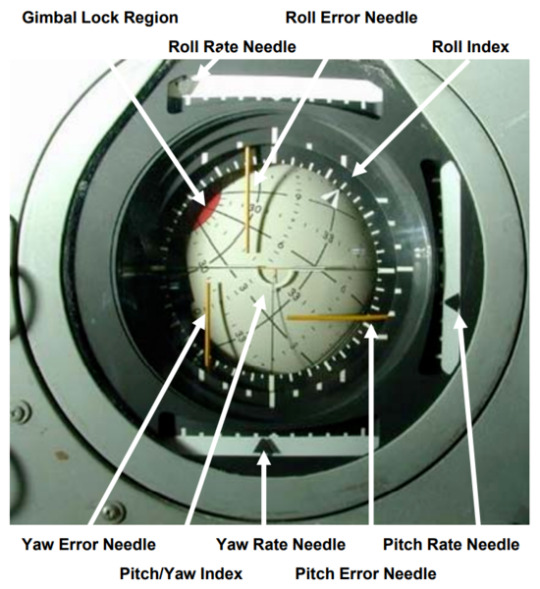
Oh, and it's attitude, not altitude. Very different concepts that folks should not mix up.
Can't get a rocket off the pad without blowing up: Neither could NASA their first few years. Meanwhile SpaceX had 98 successful orbital flights last year, and they can reuse their boosters (the record is 18 times). But that's way off topic.
Tesla Model Y broke: It's not news when non-Teslas lose power steering, apparently. And I've had cars that took many more than three appointments to fix. We can throw around anecdata all day.
Series wiring like Christmas lights: Come on, you've got no basis for that.
It's like the Titan sub: Sigh. Really?
Okay, now to the RDN link:
the vehicle’s angular design and stainless steel body could pose danger to other road users
Absolutely true. Also true of almost every luxury pickup truck on the market. One example:
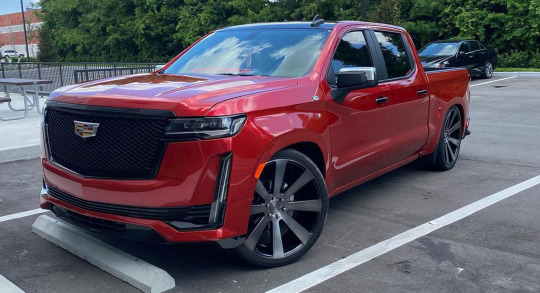
I'm all for figuring out some kind of regulatory regime to rein this in. Or maybe a modification of liability rules and increased insurance coverage minimums.
“The big problem there is if they really make the skin of the vehicle very stiff by using thick stainless steel, then when people hit their heads on it, it’s going to cause more damage to them,”
True, but it's not that thick or stiff; the speaker was speculating. Other have pointed out that "we shot it with a Tommy gun" is a lousy test because the bullets are rather low velocity. If you watch the side impact crash test, you can see the side panels visibly flexing.
And right after that, an IIHS rep said, “IIHS hasn’t evaluated the Cybertruck. The discussions we’ve seen so far appear to be based on speculation. I would add that our experience with Tesla is that they aim for the highest safety ratings in IIHS tests. We have no reason to expect anything different with the Cybertruck.”
The biggest problem with Teslas, from insurance companies' perspectives, has been that airbag-deployed collisions tend to result in totaling the vehicle more often than in other cars. Occupant safety, on the other hand, seems to be better than average. We've seen people walk away from their Model 3s after they got T-boned by speeding pickups (60-ish MPH in a 30 zone). We know this from accident reconstruction and camera data.
There's a linked video in the article comparing the Tesla Cybertruck collision to a Dodge Ram 1500. There are several others like it on YouTube (I saw one that had six trucks in it, all synced up). They all have the same flaw: they're comparing different crash types. The Cybertruck is doing a full frontal crash, where you drive the vehicle into a solid, immovable wall, while the others are moderate overlap crashes, where the hood goes over the obstacle and only the left 1/3 of the vehicle is obstructed, so the engine can deflect to the sides instead of going into the firewall and then the passenger compartment. The Cybertruck, of course, does not have a large engine in that space; it's mostly cargo storage. And we can clearly see it crumpling and the front wheel moving outward instead of back into the passenger compartment, like practically all cars do now.
(Some folks like to point out how the rear wheel breaks away, too: this is expected because it's a steering wheel, since the Cybertruck has four-wheel steering, and uses the same suspension technology as the front, instead of connecting the rear wheels more directly to the rear axle like most vehicles. Not completely directly, though, like the Chevy Corvair's swing axles. In any case, kinetic energy breaking the rear wheels off like that is energy that isn't compromising the cabin.)
The article addresses the "lack" of crumple zones:
Samer Hamdar, a George Washington University auto safety professor, told Reuters that while a lack of crumple zones concerned him, there could be other factors that accounted for it. “There might be a possibility of shock-absorbent mechanism that will limit the fact that you have a limited crumple zone,” Hamdar said.
I'm not going to speculate about crumple zones beyond the above ("the cargo area collapses, taking some energy with it; we have to see if that's enough to call a crumple zone, but it's not nothing") until someone tears one down and documents it. But crumple zones aren't the only means of keeping kinetic energy out of the passengers.
The rest of the article goes back to concerns about pedestrian safety, which seem to be the main substantive concern, and is noted at the end of this video:
youtube
And again, pedestrian safety is an industry-wide problem. We need another Ralph Nader, but demonizing Tesla alone (god it's so easy, Elon is such an asshole) only gives cover to the rest of the industry. And none of the tweets in OP's post spoke of this.
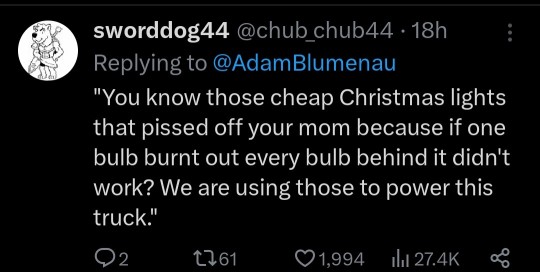
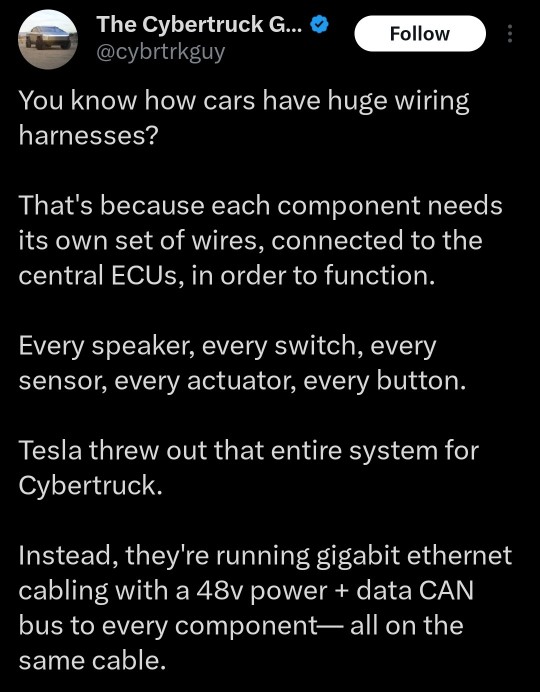
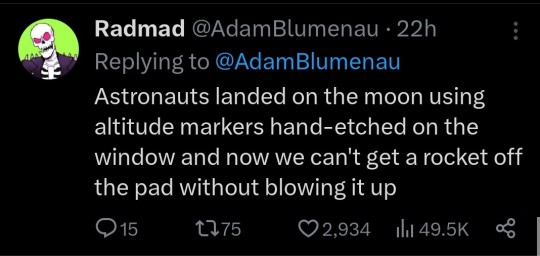
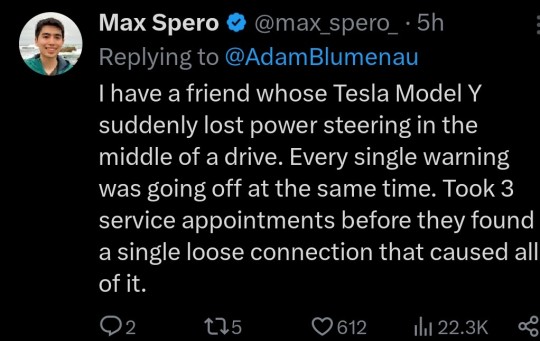
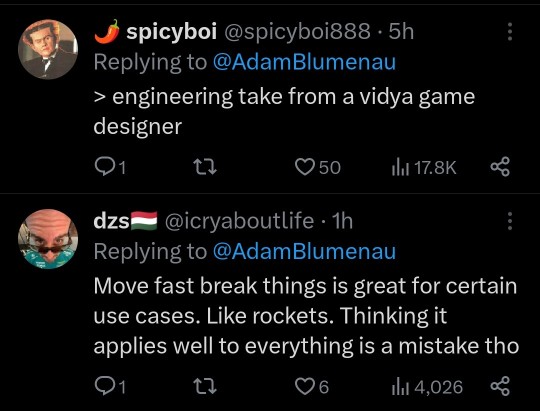
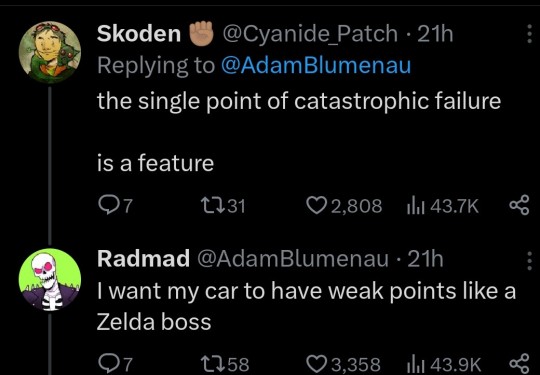

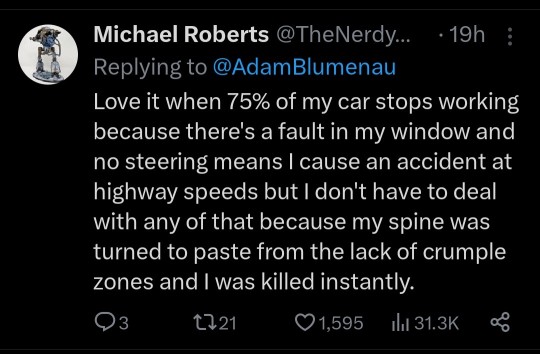
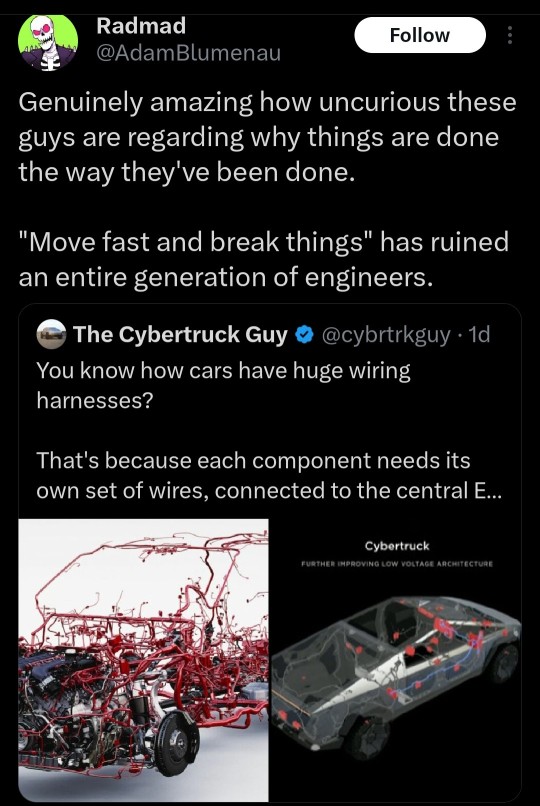
42K notes
·
View notes
Text
XirDecoder DTC Chip Tuning FAQ: Setup & Troubleshooting Guide
What is XirDecoder? XirDecoder DTC is a cutting-edge software platform specializing in advanced chip tuning for vehicles. With a database of over 130,000 files, it provides unparalleled diversity and precision in tuning solutions. Unlike competitors, XirDecoder uses unique DAMOS mapping to ensure a 100% success rate and minimize risks. The system delivers custom-matched tuning files tailored to your specific vehicle and requirements, eliminating the need for generic solutions.
Features: Supports Stage 1 to Stage 3 tuning. Solutions for DPF/EGR/AdBlue disabling, Launch Control, and more. No dongle is required - the license is instantly activated and linked to your computer. Expert support for Standard and Ultimate package users, with custom solutions delivered within 1 hour. Three versions are available: the Standard Version, the Basic Version, and the Ultimate Version.


Frequently Asked Questions
1. How Do I Activate XirDecoder After Payment? After completing your payment, you’ll receive an email with a download link and activation instructions. Reply to the email with the required details, and your license will be activated shortly. You can then start using the software immediately.
2. How Do I Open a Support Ticket? If you can’t find a solution for your ECU file, follow these steps to open a ticket: 1) Copy the ECU info from the software (found in the information section). 2) Click the Help Desk button. 3) Paste the ECU info and specify your request (e.g., "Stage 1 and AdBlue off"). 4) Send the message. 5) Track your ticket’s progress in the "Ticket" section of the software. Once processed, you can upload the updated file and proceed with tuning.
3. What Should I Do If I Encounter License Issues? Ensure your internet connection is stable. Close any remote access programs (e.g., AnyDesk, TeamViewer), as these can interfere with the software. Check your antivirus settings - some programs may block XirDecoder. If the problem persists, contact support for further assistance.
4. Can I Test XirDecoder Before Purchasing? We do not offer free trials to prevent misuse. However, you can evaluate our file quality using the free "EDC17C46" ECU file available in our software. Additionally, check genuine user reviews on Mhh Auto, a trusted forum where feedback comes from real users.
Additional Information Upgrades: You can upgrade your package anytime by paying the difference. Contact us via email for details.
Renewals: An annual renewal fee is required to keep your account active. Unpaid accounts will be deactivated until payment is completed.
Why Choose XirDecoder? ✅ 130,000+ files for unmatched vehicle coverage. ✅ DAMOS mapping for 100% success and safety. ✅ Instant activation - no dongles or delays. ✅ Expert-backed solutions for all tuning needs.

For more details, visit our website or contact our support team!
www.obd2shop.co.uk
0 notes
Text
Everything You Need to Know About Gear Sensor Cable Manufacturing
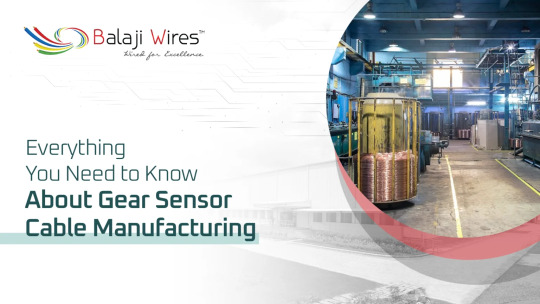
You can have the most advanced vehicle design in the world, but the whole system can go haywire if your signal fails at the wrong moment.
That is where Gear Sensor Cable Manufacturing steps in. It is not the flashiest part of automotive engineering but critical, especially when chasing performance, safety, and reliability. At Balaji Wires, we have spent years perfecting the craft of making sensor cables that don’t just work; they work like they were born for it.
Everything runs smoother when your cables are built right, from transmission shifts to real-time ECU feedback. But the truth is, not all cables are created equal. Subpar materials, inconsistent insulation, poor heat resistance—these little issues add up fast and cost way more than you’d think. That is precisely why customers trust our precision-built cable solutions. We don’t just make wires. We engineer purpose-driven connections for the road ahead.
What goes into creating a cable that keeps up with tomorrow’s vehicles? This blog dives straight into it—no fluff, just the good stuff you need to know.
What Makes Gear Sensor Cables So Essential?
There is no room for error when it comes to your gear system.
One wrong signal can delay shifts, mess with drive performance, or even lead to bigger mechanical failures. That is why gear sensor cable manufacturing is all about precision. These are not just wires but real-time messengers relaying critical data from gear shifts to the vehicle’s electronic brain.
As cars get smarter and EVs dominate the roads, the margin for cable error shrinks. Smooth shifting, accurate positioning, fluid communication—everything depends on the quality of the sensor cables.
That is where experience, materials, and manufacturing discipline come in. We have seen firsthand what cheap wires do and built our process to be the antidote to failure because a sensor cable should never be the weak link.
Choosing the Right Materials: The Backbone of Cable Strength
You can’t build trust with shortcuts and definitely can’t make quality cable solutions without correcting the materials.
Our approach begins with high-conductivity copper and specialised copper alloys, chosen for their unmatched bend resistance and durability. Then comes the insulation. We work with everything from PVC to thermoplastic elastomers and high-performance XLPO, and depending on the temperature, fluid exposure, and vibration profile, the cable must endure.
And let us not forget the jackets. Those outer layers are not just for show—they are the armour that holds everything together. We select materials that protect without compromise, whether it’s extreme cold, engine heat, or chemical splash. Because when you are designing sensor cables for a real-world environment, theory is not enough. You have to design for chaos and deliver consistency.
Inside Our Process: From Drawing to Dispatch
When people talk about manufacturing, they usually picture machines. However, gear sensor cable manufacturing is a system of intelligence, craftsmanship, and real-time decision-making.
At Balaji Wires, every cable goes through a tightly controlled series of steps—from conductor drawing and stranding to insulation extrusion, twisting, sheathing, and final testing.
Every step counts. We don’t believe in cutting corners. Our ERP-backed systems ensure traceability, our labs test for every condition, and our team knows how to spot the most minor flaws before they snowball into failures.
Why? Because the tiniest detail can decide whether your gear shifts seamlessly or throws a tantrum. That is the level of care that goes into our sensor cables.
Built for India. Approved for the World.
India’s roads don’t go easy on vehicles.
Between the temperature swings, rough terrains, waterlogging, and long hours of operation, cables need to do a lot more than just pass factory tests. That is why our cable solutions are designed not just for compliance, but for survival. They are fluid-resistant, abrasion-proof, temperature-tested, and built to last.
More importantly, they meet global standards too. With approvals from leading OEMs, Tier-1 suppliers, and certifications like UL and ISI, our cables are already making their mark across international markets. When someone picks up a sensor cable from us, they don’t just buy a product. They invest in reliability. And that matters.
Why Balaji Wires is the Name Behind Trusted Cable Solutions
Decades of experience, a future-focused mindset, and relentless attention to quality—that is what defines us.
We are not in the business of just selling wires; we are in the business of solving problems and building trust. Our team does not wait for problems to arise. We work with our customers from the design stage, run VAVE workshops, and deliver tailor-made cable solutions that improve product performance and reduce costs.
Whether it is a fast-paced automotive line, a next-gen EV project, or a replacement order in a pinch, our gear sensor cable manufacturing approach adapts quickly. The goal stays the same: build better, respond faster, and keep the customer at the centre.
Wrapping It Up!
Sensor cables are no longer the quiet background players in the world of fast shifts and smarter vehicles. They are front and centre in determining how smoothly things run. And when they are made right, everything else works better.
That is why choosing the right gear sensor cable manufacturing partner matters more than ever. At Balaji Wires, we are not just keeping up with the future. We are helping shape it—one signal, one cable at a time.
0 notes
Text
Inside the World of Electronics Manufacturing: How the Devices You Love Are Built
Every smartphone, smart appliance, and electric vehicle you rely on begins its journey inside the intricate world of electronics manufacturing companies. These firms are the hidden force behind the global tech industry, turning complex designs into physical products that power our modern lives.
With the rise of automation, smart devices, and increasing global demand, electronics manufacturing has become a cornerstone of modern industry. And when we talk about scaling this revolution, one country is quickly taking center stage—India. In this article, we explore what electronics manufacturing is, how it works, and why electronics manufacturing companies in India are becoming critical players on the world stage.
Understanding Electronics Manufacturing
Electronics manufacturing is the process of producing electronic devices through the design, assembly, and testing of components like printed circuit boards (PCBs), semiconductors, sensors, and microprocessors. These components are integrated into everything from smartphones and laptops to medical devices and aerospace systems.
Whether you're using a smartwatch, a home security system, or a connected car, your experience is made possible by the precision and efficiency of electronics manufacturing companies.
What Do Electronics Manufacturing Companies Do?
Modern electronics manufacturing companies are more than assembly lines. They offer comprehensive end-to-end solutions that support a product’s journey from idea to market-ready product. Their key services include:
Product design and engineering
Component sourcing and supply chain management
PCB fabrication and SMT/THT assembly
Prototyping and rapid iteration
Testing, inspection, and certification
Box build and final integration
These services ensure that clients—from startups to Fortune 500 firms—can rely on their manufacturing partners for both quality and scalability.
India’s Rise as a Global Electronics Manufacturing Hub
Over the last decade, electronics manufacturing companies in India have emerged as serious contenders on the global stage. With government-backed initiatives like Make in India, Digital India, and PLI (Production Linked Incentive) schemes, the country is building a strong ecosystem for electronics production.
Why India?
Abundant Skilled Talent: India produces millions of engineers and technicians annually, providing the necessary human capital to power advanced manufacturing.
Competitive Cost Advantage: Indian companies offer world-class quality at significantly lower operational costs compared to Western countries.
Policy and Infrastructure Support: The Indian government has created dedicated Electronics Manufacturing Clusters (EMCs) and simplified regulatory frameworks to attract foreign and domestic investment.
Growing Domestic Market: With over a billion consumers and rapid digital adoption, India’s internal demand for electronics is driving massive growth in manufacturing capacity.
What to Expect from an Electronics Manufacturing Company in India
Many of India’s leading electronics manufacturing companies provide a wide range of specialized services tailored to meet the demands of global OEMs and tech innovators. These include:
PCB Assembly (Surface Mount & Through-Hole Technology)
Electromechanical Integration
Embedded System Development
Wire Harness & Cable Assembly
Design for Manufacturability (DFM)
Final Product Assembly and Packaging
India-based EMS companies are known for their flexibility, fast turnaround times, and ability to support both low-volume prototyping and high-volume production.
Key Industries Served by Indian Electronics Manufacturing Companies
Consumer Electronics: Smartphones, smart TVs, washing machines, wearables, and home automation products.
Automotive: Engine control units (ECUs), infotainment systems, battery management for EVs.
Telecommunications: 4G/5G network equipment, IoT modules, and routers.
Medical Technology: Diagnostic devices, patient monitoring systems, and portable health gadgets.
Industrial Automation: Robotics, control systems, sensors, and energy management.
The Future of Electronics Manufacturing in India
India's electronics manufacturing sector is undergoing a major transformation, marked by several key trends:
Shift Toward High-Value Products: Indian companies are expanding beyond simple assembly to advanced design, R&D, and even semiconductor packaging.
Smart Factory Adoption: AI, robotics, and IoT technologies are being integrated into production lines, aligning with global Industry 4.0 standards.
Sustainable Manufacturing: More companies are adopting green energy, reducing e-waste, and focusing on eco-friendly production models.
As global supply chains diversify and companies look for reliable partners outside of China, India is well-positioned to meet demand with quality, innovation, and cost-effectiveness.
Conclusion: Building the Future, One Circuit at a Time
The devices that define modern life—from phones and laptops to electric cars and wearable tech—are born in the facilities of electronics manufacturing companies. These firms are the unsung heroes of innovation, making cutting-edge technology accessible, affordable, and scalable.
As electronics manufacturing companies in India continue to grow in capability and reputation, they are set to play a leading role in the next chapter of global tech manufacturing. For entrepreneurs, tech companies, and OEMs around the world, India offers a powerful blend of talent, technology, and opportunity.
Looking for a Trusted Electronics Manufacturing Company in India?
Explore verified manufacturers, compare capabilities, and connect with industry leaders on FindingMFG.com. Whether you're building your next big product or scaling production globally, your ideal partner is just a click away.
0 notes
Text
How to Add BMW BDC2 Key with Launch X431 PAD V or VII?
Good news!!! Launch X431 has extended its BMW G-Chassis BDC2 key programming functionality to the X431 PAD Series (including PAD9 LINK, PAD VII, PAD V…). This powerful feature was previously exclusive to the X431 IMMO Series (IMMO Plus/Elite/PAD/Pro) and is now available across more devices. All require X-Prog3 & MCU3 Adapter to perform this function. No need license!
Here takes Launch X431 PAD9 LINK as an example to show how to add a BMW BDC2 key.
Preparation:
X-431 PAD9 LINK
X-431 X-Prog3
X-431 MCU3 Adapter
BMW G series BDC2 module
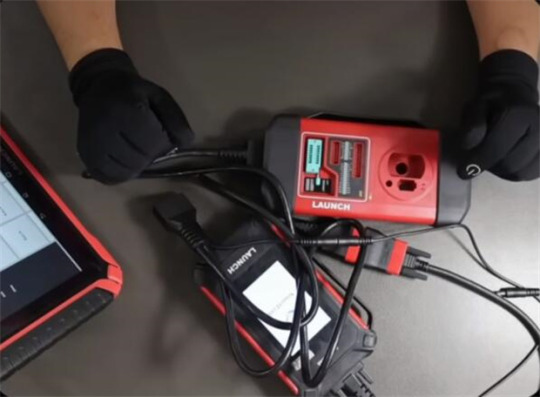
Main steps:
Step 1: Connection Setup
Step 2: Data Backup
Step 3: Module Preprocessing
Step 4: Key Reading
Step 5: Key Programming
Step 1: Connection Setup
Connect X-Prog3 in bench mode using MCU3 Adapter
Select: BMW → Main Functions → Anti-Theft Matching → BDC02 IMMO
Step 2: Data Backup
Perform encoding operation → Backup codes

Step 3: Module Preprocessing
Remove BDC2 module shell carefully

Select: Programming Operation → Read-out Preprocessing

Follow on-screen connection instructions:
Connect EEPROM Pin2 (verify no short circuit with Pin3)
Connect MCU Reset (ensure correct identification)
Use USB connection for stable communication
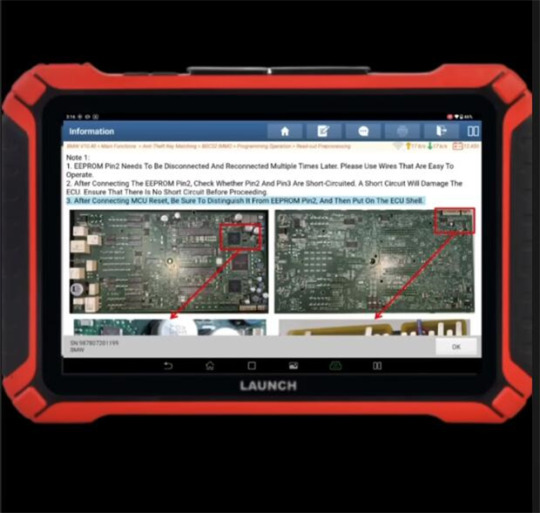

Verify continuity between pins (remove any unintended connections)
Power up MCU3 and connect MCU reset to X431 X-Prog3 (B8)
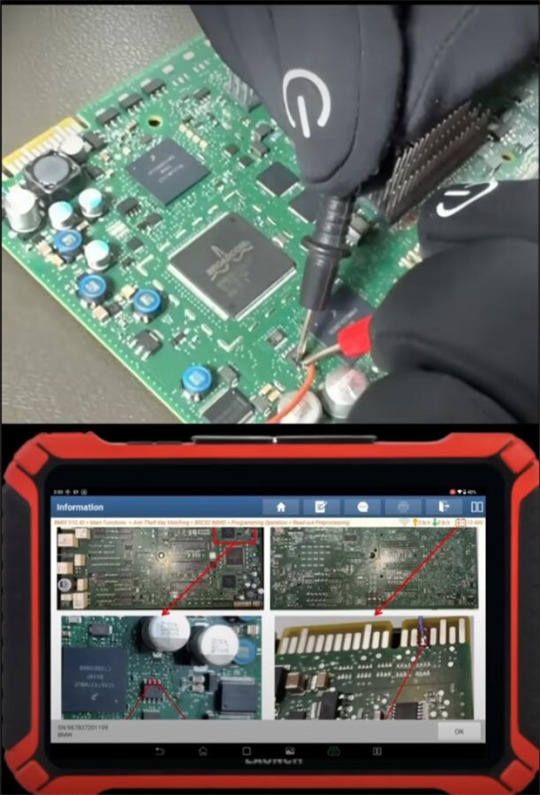
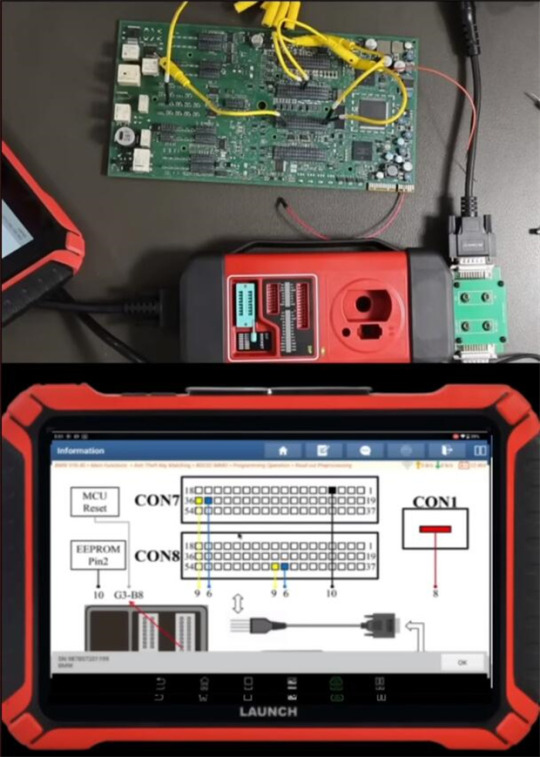
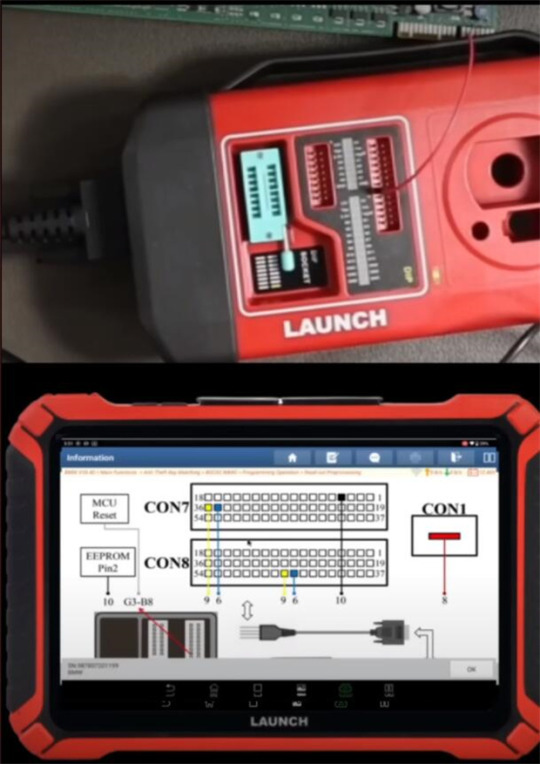
After connection, read the anti-theft data and upgrade ECU
Processing is successful

Restore coding data for the BDC
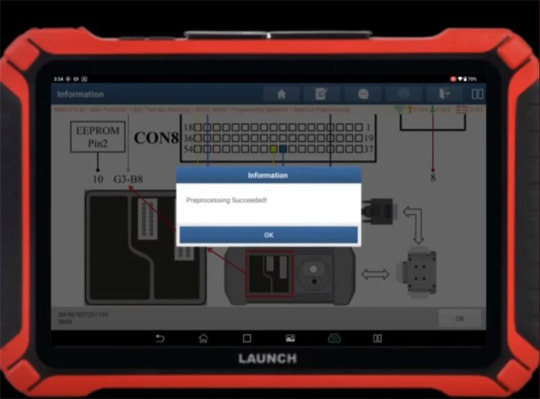
Step 4: Key Reading
Select: Key Operation → Read Original Vehicle Key
Place working key in X-Prog3 coil
Confirm successful data read

Step 5: Key Programming
Select: "Generate Dealer Key"
Choose unused key position
Place new key in X-Prog3 programmer
Complete learning process
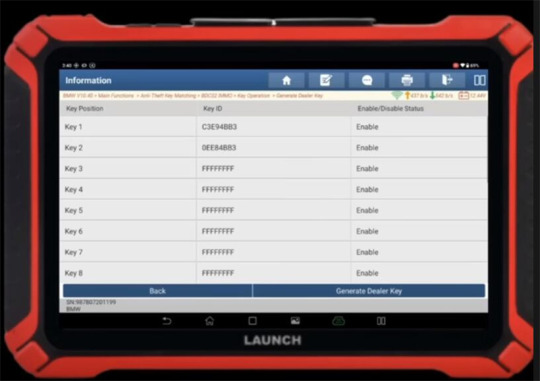
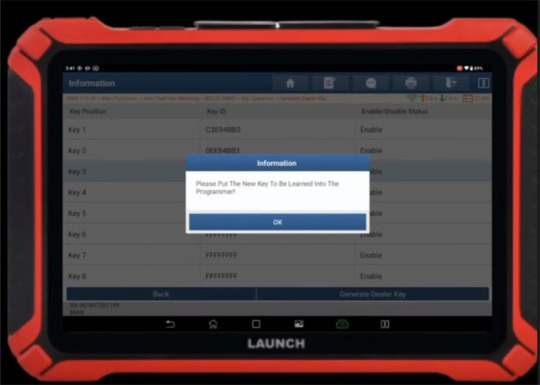
Read also:
0 notes
Text
First Street Place in Greenville, NC
Living near East Carolina University or in any ECU student living options has become increasingly popular among young professionals and students for its convenience and safety, with First Street Place emerging as a standout choice. These premium student apartments offer a blend of living spaces suitable for both students and professionals, striking a perfect balance between privacy and accessibility. An irresistible option for those seeking upscale accommodations and a student-centric living environment, First Street Place appeals to individuals desiring both comfort and convenience. It promises a remarkable living experience in the vibrant heart of Greenville, NC, making it an attractive choice for anyone looking to immerse themselves in a high-quality living environment near the university.
Greenville, NC
These days, exploring upcoming events and activities in Greenville, NC has become more convenient with the availability of online resources like Eventbrite. For those planning to visit soon, notable events include the Bluey Paint Party + Meet and Greet this Saturday, June 21, 2025, at 2:00 PM, located at 3004 S Memorial Drive. Another option is the Dementia Care Workshop: Navigating the Journey on Tuesday, June 24, 2025, starting at 9:00 AM in Greenville, NC, USA. Lastly, mark your calendars for the White VS Black PARTY happening on Saturday, July 5, 2025, at 6:00 PM in the Greenville North Carolina Convention Center. Stay informed and make the most of your time in Greenville by exploring these diverse and engaging events.
Dowdy-Ficklen Stadium in Greenville, NC
The Dowdy-Ficklen Stadium, located in Greenville, NC, is a true gem that proudly serves as the iconic football facility for the East Carolina Pirates at East Carolina University. Boasting an impressive capacity of 51,000, it holds the esteemed title of being the second-largest college stadium in North Carolina. Notable for its record-breaking attendance of 51,711 fans during a thrilling game against North Carolina State University in September 2022, the stadium carries a rich history of monumental moments. Additionally, beyond its football significance, the stadium plays host to the university's Spring Commencement exercises, adding a touch of elegance to its multifaceted identity. Renamed Bagwell Field in 1997, this venue exudes a timeless charm and historical significance, firmly establishing itself as a premier destination for both sporting events and academic ceremonies.
‘Been so long, but it’s amazing’: Family reunites with dog years after losing him
In the vibrant Greenville, NC community, a heartwarming news story has recently emerged, focusing on a family's remarkable reunion with their beloved pet after losing him in 2021. The article highlights the emotional journey of Emalee Boyd, who found their lost dog, Romeo, at the Radford Animal Shelter in Virginia. The joy of being whole again as a family was palpable, with Boyd expressing disbelief at their stroke of luck in finding Romeo after a prolonged separation. Reflecting on the surreal experience, Boyd shared her overwhelming love for Romeo, emphasizing the profound bond that had endured despite the passage of time.
Link to map
Dowdy-Ficklen Stadium 100 Ficklen Dr, Greenville, NC 27858, United States Head southeast toward W Berkley Rd 0.1 mi Turn left onto W Berkley Rd 0.1 mi Turn right onto E 14th St 0.1 mi Turn left at the 1st cross street onto S Elm St 1.0 mi Turn left onto E 1st St 0.9 mi Turn right onto N Greene St 0.3 mi Sharp left onto N Pitt St Destination will be on the right 0.3 mi First Street Place 400 W 1st St, Greenville, NC 27834, United States
0 notes
Text
Mahindra Genuine Parts – Exported Globally by Smart Parts Exports
Mahindra vehicles are a global leader in durability, performance, and reliability. From rugged utility vehicles, to efficient passenger vehicles, to powerful commercial vehicles, Mahindra vehicles have established a solid bond in the worldwide automotive market. But the real key to ensuring the most performance from any Mahindra vehicle is to use Mahindra Genuine Parts.
At Smart Parts Exports, we specialize in their parts where we supply Mahindra parts to customers all over the world. Focused on authenticity, affordability and delivery, Smart Parts Exports will keep your Mahindra rolling no matter where you are. We make it easy for you to source Mahindra genuine spare parts from India whether you are a distributor, a garage owner, a fleet operator or an end user.

Why Mahindra Genuine Parts Matter
Every vehicle is made up of parts. Saving some money on spare parts by using cheap or fake replacements may seem beneficial in the short term, but will usually result in damage to your vehicle, higher maintenance costs, and poorer performance and reliability. Mahindra genuine parts make a difference in that respect.
Key Benefits of Using Genuine Mahindra Spare Parts:
Precision Engineered: Designed for use in Mahindra vehicles.
Quality Tested: Produced and tested to stringent quality assurance standards.
Extended Durability: High durability parts extend vehicle life.
Improved Safety: Maintains the original safety standards of the vehicle.
Warranty Assurance: Often supported by OEM-backed warranties.
Smart Parts Exports – Your Trusted Mahindra Parts Exporter
At Smart Parts Exports, we are proud to be among the almost all trusted exporters of Mahindra spare parts from India. With years of industry experience and a global network of clients, we ensure our consumers receive 100% genuine parts, at competitive prices, with no settlement on quality.
Why Choose Smart Parts Exports?
Worldwide Shipping: We export Mahindra parts to Africa, Latin America, Russia, the Middle East, Southeast Asia, and Europe.
Wide Product Range: From engine components to suspension systems, we supply all types of Mahindra genuine spare parts.
B2B Focus: Ideal for importers, workshop owners, auto parts dealers, and fleet service providers.
Quick Dispatch: Fast order processing and export documentation support.
Customer Support: Expert assistance in sourcing the right part for your vehicle.
Popular Mahindra Spare Parts We Export
Smart Parts Exports carries a wide range of genuine Mahindra parts across several models and each part carries or is supplied with a unique OEM or OES part number linked to the brand or model of vehicle.
Please find below, a few of our most frequently requested parts categories:
Engine Parts: Pistons, cylinder liners, timing belts, gaskets and crank shafts.
Suspension & Steering: Shock absorbers, control arms, tie rods.
Brakes: Brake pads, discs, calipers, master cylinders.
Electrical Components: Starter motors, alternators, sensors, ECUs (computers).
Body: Bumpers, grills, head lamps, mirrors, doors.
Clutch & Transmission: Clutch plates, pressure plates, gearboxes, bearings.
All our parts are sourced, as required from OEM and OES to confirm all parts supplied are Mahindra genuine parts.
Serving Global Markets with Genuine Mahindra Spare Parts
Our logistics and shipping operations are optimized to serve a global clientele. Whether you are in:
Russia or Eastern Europe
South Africa, Kenya, or Nigeria.
UAE, Saudi Arabia, or Oman.
Bangladesh, Nepal, or Sri Lanka.
Latin America or the Caribbean.
We provide reliable supply chains to deliver Mahindra genuine spare parts, right to your door.
How to Identify Mahindra Genuine Parts?
One of the biggest concerns buyers face is receiving counterfeit or low-quality products. To avoid this, make sure you purchase from verified exporters like Smart Parts Exports and look for these signs:
Mahindra Packaging: True to original boxes, Mahindra branding, and holograms.
QR Code Verification: Most Mahindra genuine parts are packaged with scannable codes.
Genuine Part Numbers: Each genuine part has an official Mahindra part number.
Installation Manual/Labeling: Comes with fitting instructions or labeled specifications.
Buying from us ensures that you are investing in 100% original parts that match Mahindra’s manufacturing standards.
Bulk Orders & Dealer Inquiries Welcome
If you are a dealer or wholesaler looking to buy Mahindra parts in bulk, we offer special rates and customized packaging. Our experienced export team helps with:
Invoice and documentation for customs clearance.
HS codes and international part identification.
Multiple shipping options: air, sea, courier.
Join our growing base of international buyers who trust Smart Parts Exports for all their Mahindra spare part requirements.
Ordering Process Made Easy
We understand that ordering automotive parts internationally can be complex. That’s why Smart Parts Exports makes it simple:
Send Your Requirements: Share part numbers or vehicle details.
Get a Quote: Receive competitive pricing within 24 hours.
Confirm Your Order: We’ll send you an invoice and payment options.
Dispatch & Tracking: Orders dispatched with tracking updates provided.
Delivery: Safe and timely delivery to your location.
Conclusion
When you invest in a Mahindra vehicle, maintaining it with the right components is critical. Mahindra genuine parts not only contract performance but also keep safe your speculation in the long run. With Smart Parts Exports, you get a well founded partner who understands your needs including delivering quality every time.We invite garages, distributors, and global buyers to experience the difference with Smart Parts Exports – your one-stop solution for mahindra genuine spare parts
0 notes